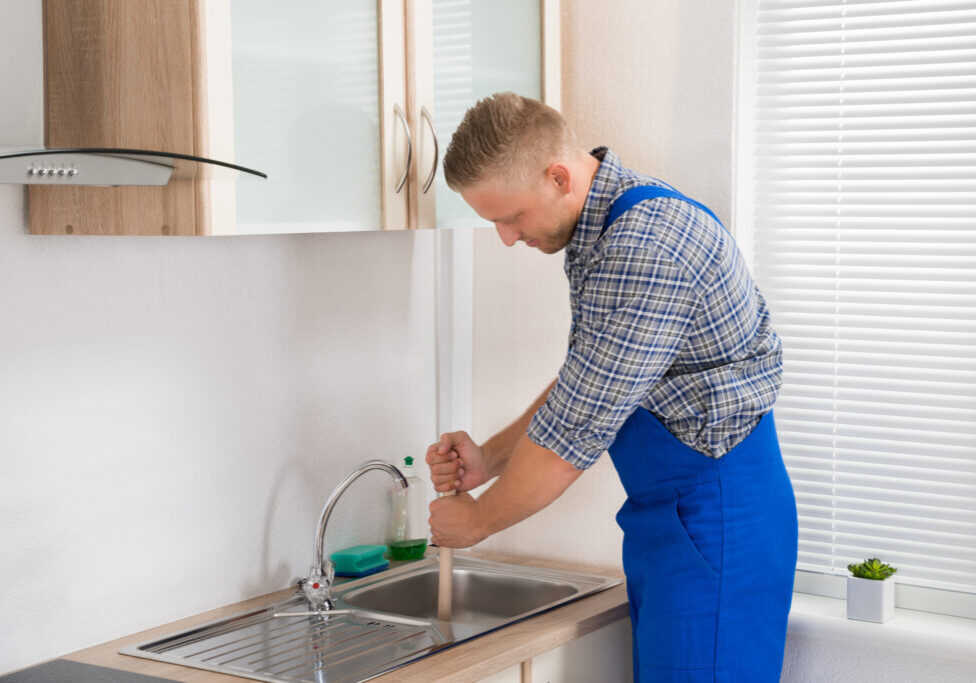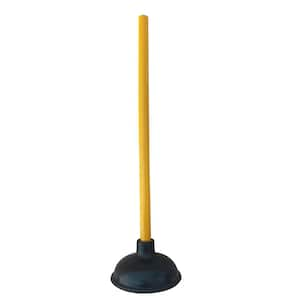How to Effectively Utilize Plungers and Drain Cleaner: Pro Guide
How to Effectively Utilize Plungers and Drain Cleaner: Pro Guide
Blog Article
What are your beliefs on How to Use a Plunger to Unclog a Toilet or Drain?

Introduction
Proper maintenance of home drains pipes is necessary for avoiding obstructions and making sure smooth water circulation. Among the trick tools in every property owner's toolkit is the bettor, alongside numerous drain cleaners created to deal with stubborn obstructions successfully. This write-up explores how to use plungers and drain cleaners effectively to keep your drains moving openly.
Area 1: Recognizing Bettors
Kinds of Plungers
There are a number of types of plungers readily available, each made for various types of drains and obstructs. The most common types include mug bettors, flange bettors, and accordion bettors.
Exactly How Plungers Work
Plungers work on the concept of developing stress and suction to remove blockages. When correctly applied over a drain, they produce a vacuum that can pull out debris or separate clogs.
Picking the Right Bettor
Choosing the right plunger depends on the type of drainpipe and the nature of the obstruction. Mug plungers are suitable for sinks and tubs, while flange plungers are better matched for commodes as a result of their style.
Typical Mistakes with Bettors
Preventing these mistakes ensures reliable plunging: incorrect seal around the drain, not enough force, and unclear surrounding debris.
Area 2: Utilizing Plungers Efficiently
Prep work
Before plunging, make certain the plunger covers the drain completely and develops a limited seal. Clear any visible particles around the drainpipe opening.
Method
Start with gentle plunging movements to develop suction. Boost stress gradually, using a stable rhythm. Repeat as required up until the drain clears.
Troubleshooting Tips
If plunging does not function, attempt changing the seal, applying petroleum jelly for a far better seal, or making use of a various type of plunger.
Section 3: Understanding Drainpipe Cleaning Company
Types of Drain Cleaners
Drain cleaners can be chemical or enzymatic. Chemical cleaners use strong chemicals to dissolve clogs, while enzymatic cleaners make use of all-natural enzymes to break down raw material.
Just How Drainpipe Cleansers Work
Chemical cleaners respond with obstructions to liquify them, while enzymatic cleaners break down organic products like hair and oil without harming pipes.
Safety and security Factors to consider
Always wear handwear covers and eye security when using chemical drainpipe cleaners. Guarantee adequate ventilation and follow supplier guidelines carefully.
Eco-Friendly Alternatives
Consider utilizing vinegar and baking soft drink or enzyme-based cleaners for environmentally friendly options that are more secure for pipes and the setting.
Area 4: Utilizing Drainpipe Cleansers Efficiently
Application Strategies
Pour chemical cleansers directly right into the drainpipe opening. Enable them to benefit the recommended time prior to purging with hot water. Chemical cleansers should sit over night.
Precautions
Prevent blending various types of cleaners, as this can create hazardous fumes. Never ever use chemical cleaners together with a bettor, as spilling can take place.
Taking Care Of Stubborn Clogs
For persistent clogs, consider using a plumbing snake or calling an expert plumber to prevent damages to pipelines.
Final thought
In conclusion, understanding just how to utilize plungers and drainpipe cleansers efficiently is important for maintaining healthy and balanced plumbing systems. By picking the right tools and techniques, house owners can tackle small blockages and protect against major pipes problems down the line.
How to Use a Plunger to Unclog a Drain
The humble plunger is a simple yet effective tool for breaking clogs in sinks, tubs and toilets. This handy tool is easy to use. You can make the most of its power if you understand how it works. Ready to dive in? Here’s what you need to know.
Safety First!
Never use a plunger with drain chemicals. Water will splash as you work, and the chemicals can spatter, burning skin and eyes. It’s a good idea to use rubber gloves and wear safety goggles when you work on a clog.
Choose the Right Tool for the Job
Plungers come in two different styles. Sinks, bathtubs and showers require a cup plunger. Like its name suggests, the rubber end is shaped like a cup. Use a flange plunger on toilets. These plungers have a rubber funnel extending from the cup. A plunger needs to be big enough to cover the drain.
Ready, Set, Plunge!
Coat the rim: Coat the plunger rim with petroleum jelly. This helps make a better seal.
Block outlets: Hold a wet rag over nearby outlets such as the overflow vent or the drain in a second sink.
Release air: Insert the plunger at an angle into the water. Water will displace air in the cup. A water-filled cup is more forceful than one filled with air.
Keep the plunger upright: Hold the plunger perpendicular to the drain. Use fast, forceful strokes, but make the first stroke gentle. The first stroke can create a splash if the cup still contains air. Thrust the plunger 15 to 20 times.
Snap off the plunger: The final stroke should be a strong upward motion that ends when the plunger snaps off the drain.
Repeat the process: you may need to repeat this sequence several times. When the water drains away, your work is done. High-five! https://plumbernw.com/blog/how-to-use-a-plunger-to-unclog-a-drain/

Application Strategies
Pour chemical cleansers directly right into the drainpipe opening. Enable them to benefit the recommended time prior to purging with hot water. Chemical cleansers should sit over night.
Precautions
Prevent blending various types of cleaners, as this can create hazardous fumes. Never ever use chemical cleaners together with a bettor, as spilling can take place.
Taking Care Of Stubborn Clogs
For persistent clogs, consider using a plumbing snake or calling an expert plumber to prevent damages to pipelines.
Final thought
In conclusion, understanding just how to utilize plungers and drainpipe cleansers efficiently is important for maintaining healthy and balanced plumbing systems. By picking the right tools and techniques, house owners can tackle small blockages and protect against major pipes problems down the line.
How to Use a Plunger to Unclog a Drain
The humble plunger is a simple yet effective tool for breaking clogs in sinks, tubs and toilets. This handy tool is easy to use. You can make the most of its power if you understand how it works. Ready to dive in? Here’s what you need to know.
Safety First!
Never use a plunger with drain chemicals. Water will splash as you work, and the chemicals can spatter, burning skin and eyes. It’s a good idea to use rubber gloves and wear safety goggles when you work on a clog.
Choose the Right Tool for the Job
Plungers come in two different styles. Sinks, bathtubs and showers require a cup plunger. Like its name suggests, the rubber end is shaped like a cup. Use a flange plunger on toilets. These plungers have a rubber funnel extending from the cup. A plunger needs to be big enough to cover the drain.
Ready, Set, Plunge!
Coat the rim: Coat the plunger rim with petroleum jelly. This helps make a better seal. Block outlets: Hold a wet rag over nearby outlets such as the overflow vent or the drain in a second sink. Release air: Insert the plunger at an angle into the water. Water will displace air in the cup. A water-filled cup is more forceful than one filled with air. Keep the plunger upright: Hold the plunger perpendicular to the drain. Use fast, forceful strokes, but make the first stroke gentle. The first stroke can create a splash if the cup still contains air. Thrust the plunger 15 to 20 times. Snap off the plunger: The final stroke should be a strong upward motion that ends when the plunger snaps off the drain. Repeat the process: you may need to repeat this sequence several times. When the water drains away, your work is done. High-five! https://plumbernw.com/blog/how-to-use-a-plunger-to-unclog-a-drain/

We were shown that report on How To Use Your Toilet Plunger Correctly in 5 Easy Steps from an associate on another site. You should take a moment to promote this write-up if you enjoyed reading it. I value your readership.
Browse Website Report this page